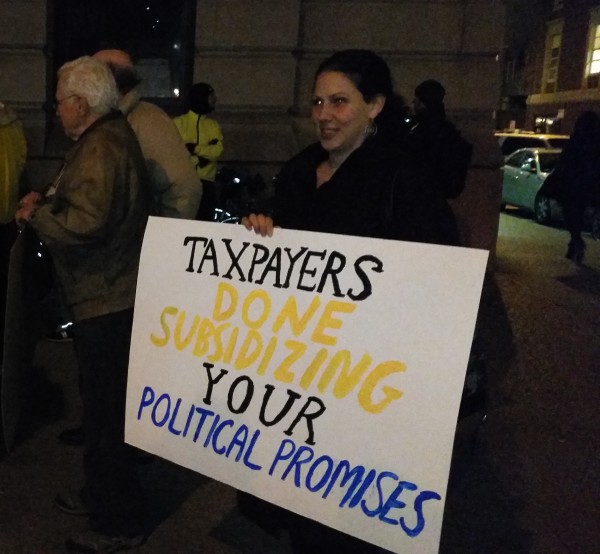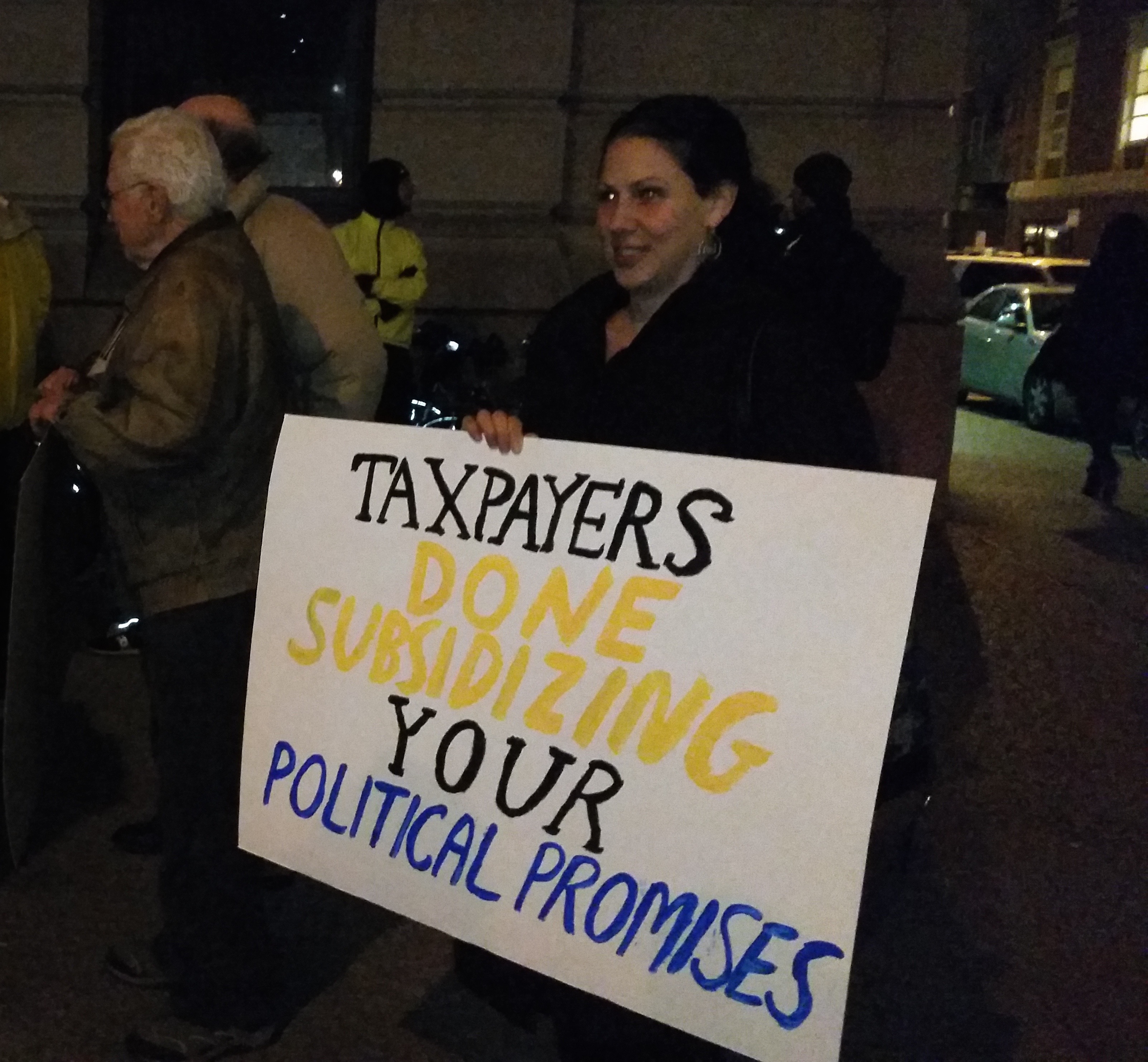
RI Future’s recent coverage of a tax stabilization agreement (or TSA) for Rising Sun Mills admirably pursues the idea of a fair tax system for all Providence residents. There’s a lot I agree with about this approach. At its roots, TSAs are an insider deal. But the logic behind TSAs makes a lot more sense than is obvious at a first glance. The goal for the city should be to establish a tax system that mirrors some of the features of TSAs, rather than carve out special agreements for the well-connected.
What is a TSA?
To begin with, what is a TSA? Tax stabilization can take many forms, but they’re usually agreements that require the owner of a property to pay the same taxes that were previously paid, though not more, in return for the property owner adding a new building or refurbishing an endangered one. (thus, a tax “stabilization”).
On the face of things, that arrangement sounds really unfair, but it makes more sense if you look at the costs that a building owner is supposed to cover with their taxes and think about how those costs change (or stay the same) after the refurbishment. An infill or renovation project in a city does not require a new sewer extension, but can be hooked up to existing lines. It does not require new streets. If it receives transit service, it’s usually on an existing line, and the new building will add ridership rather than adding miles of service area. A building being occupied may actually help to lower crime without more policing, and in any case it will be built within an existing police precinct. A building covered by an urban TSA will often be a solid building, perhaps even a historic renovation, that is intended to last a long time.
Contrast that to the typical suburban sprawl* project, like a Walmart. It will require acres of new land, and to function will need a sewer extension, gigantic new roads, or road and interchange expansions. It will add greatly to the surface runoff costs of the sewer system as well, with gigantic parking lots. Big box projects like Walmarts often demand transit service for their low-wage workers, but design everything about their facilities in order to defeat the efficiency of that service– after all, the customers and managers drive– delivering a transit service that costs a lot and delivers very little. Sometimes a single project will be the size of a small urban neighborhood, adding tremendous strain to traffic, and requiring a new police or fire precinct. For all the investment that is put into such a deal, the buildings the big box brings are meant to have a thirty year life cycle at most, and often the big box company will require land covenants that disallow competitors to move in if they should happen to leave the building (they often do leave the building, repeating this process).
Suburban projects look like a good deal because politicians won’t pay for all the additional costs that these projects bring. Those costs will accrue decades from now.
Urban and suburban communities both compete with each other to give away tax deals, and to be fair, urban TSAs are an insider deal just like any other. The politicians that prepare these deals don’t necessarily think about all the economic logic I presented above. The way they see it, the deal is about jobs for their ward. They care very little about the long-term effects. Urban TSAs happen to be a much better deal, but that’s not by design.
Fixing the TSA
Instead of creating TSAs for individual projects, we should make our tax system look a bit more like what a TSA tries to accomplish, but for everyone. A land tax should be a component of our tax system, used to offset a lower property tax. This isn’t exactly the same as a TSA. Under this arrangement, creating improvements to a property– adding buildings, fixing a roof– would still raise the value of the property and kick in more tax revenue from the property tax part of the tax model. But the land tax would stay the same– tied to the amount of land used and the resources consumed by that parcel.
Equity is a big concern under TSAs, not only for the fact that some can get a TSA and some can’t, but also because of the particular services that suffer in a city when not enough tax revenue is present. I would propose that the services paid for by the land and property tax sections of the tax code by bifurcated carefully. The land tax should pay for the things that resemble “pay for what you use” items– roads, sewers, transit, etc. The property tax should pay for things that we conceive of as “each according to their ability” services– libraries, schools, and other social services. By separating the budgets in this way, we ensure that when we tax a more valuable property, we’re tying that taxation to our ideal of sharing, rather than creating a slush fund to allow for wasteful infrastructure extensions.
Land taxes already exist in many places– my home state of Pennsylvania is one. They’re not a magic cure-all, and in order to fix our cities, we’re also going to have to stop subsidizing sprawl. Part of why I react to the criticism of TSAs is that the overwhelming nature of our subsidy mix is to ever-expanding consumption of undeveloped land for new strip malls or big boxes, cul-de-sacs and highways. The Rising Sun Mills project lost a tenant to Johnston because all the advantages of being in the suburbs– parking, big roads, etc.– are pre-paid features of life in America– while all the advantages of living in the city– walkability, community, and so on– are privatized goods to be bought and sold. We have to break that pattern. A land tax could be one step towards that.
~~~~
*”Suburban” is an ambiguous term, but here I mean suburbs that are totally car-oriented, cul-de-sac driven, post-1950s-style suburbs, rather than suburbs that have the form basically of a small walkable town that extends out from a city. Think Warwick or Johnston, rather than Bristol or Warren.

